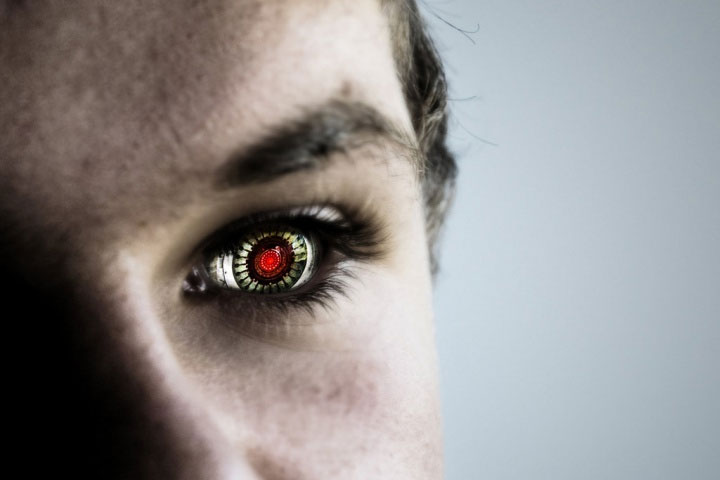The world first introduced the use of surgical robots in the eyes
We have heard about robots involved in gallbladder or prostate surgery. Now, scientists have gone one step further: putting them in people's eyes to perform surgery!
According to Futurism, in 2016, researchers from Nuffield University's Department of Clinical Neurology began the clinical trial to test the surgical system PRECEYES - a robot designed to perform surgeries in the retina, ie the surface behind the eyeball. On Monday, they published the results of this trial in Nature Biomedical Engineering.

RECEYES can be used for routine surgery.
A surgeon will use a joystick to control the mobile arm of the PRECEYES system. Doctors can mount this arm with many assistive devices, and since this system is a robot, it is not in a state of "trembling" but even the most stable human doctors have may encounter.
In the experiment, the researchers listed 12 patients who needed to remove a membrane from the retina - a fairly normal procedure. The doctors conducted six such surgeries in the traditional way, and the remaining six surgeries were performed with the help of a robot.
The above surgery begins with a small incision right above the pupil, and through that, the surgeon inserts a light. When operating with a robot, the surgeon inserts the robot under the incision that is less than 1mm in diameter. This robot will perform the separation of the membrane from the retina, then remove the membrane from the human eye and exit by the same path it entered. If the surgery does not use a robot, the surgeon must do these things completely manually using microsurgical devices while looking through a microscope for surgery.
All 12 surgeries were successful; And in some cases, robots perform surgery much more efficiently than usual. In the second phase of the trial, surgeons use robots on three patients to dissolve hemorrhage under the retina - an injury that can lead to permanent vision loss. Of course, these three surgeries were also successful.
Notably, robots supporting eye surgery performed surgeries 3 times longer than usual, but the researcher who led the trial was Robert MacLaren said the reason is that the surgeons are not yet proficient. in the use of robots and therefore they perform "slow but firm" operations.
With the results shown that PRECEYES can be used for routine surgeries, researchers are beginning to shift to different types of surgery with much higher difficulty - perhaps they will experiment. even surgeries are now considered impossible.
"Our next step will be to use this robotic surgery device to accurately and leastly damage gene therapy into the retina. That will be the first achievement in the calendar. Other history, and it will take place in early 2019 " - MacLaren said.
Although doctors were able to perform such surgeries on patients who were completely invisible, their hands were not accurate enough to identify specific points on the retina for still patients. There is still a little vision. MacLaren said the PRECEYES system may allow surgeons to directly "open up" blood vessels or inject certain types directly into the optic nerve of patients - two types of current surgery. not yet possible.
PRECEYES is one of many surgical robots that are in the process of development, and although they often do not work as quickly as humans, the accuracy of the robots will help minimize risks and open doors to perform This type of surgery has never been done before.
- Sterile surgical robots give people many diseases
- The surgical robot shows off its incredible abilities by pecking ... a grape!
- Robot surgery through the umbilical cord patient
- Future technologies will be popular in 2025
- Robots have better surgical capabilities than doctors
- Japan introduced robots worth $ 17,000 dedicated to loading
- What will the future surgery room look like?
- 19 most obsessive eyes in the history of world photography
- Controversy about the future of sex robots
- Robot doctor in space
- Canada tested non-surgical tumor treatment
- 5 most amazing surgical methods in the world
 Green tea cleans teeth better than mouthwash?
Green tea cleans teeth better than mouthwash? Death kiss: This is why you should not let anyone kiss your baby's lips
Death kiss: This is why you should not let anyone kiss your baby's lips What is salmonellosis?
What is salmonellosis? Caution should be exercised when using aloe vera through eating and drinking
Caution should be exercised when using aloe vera through eating and drinking Using virtual reality technology, surgeons in the UK and Brazil successfully separated the heads of conjoined twins
Using virtual reality technology, surgeons in the UK and Brazil successfully separated the heads of conjoined twins  For the first time in the world: 3D printed human ear, successfully implanted in a girl
For the first time in the world: 3D printed human ear, successfully implanted in a girl  New research helps to charge pacemaker batteries without surgery
New research helps to charge pacemaker batteries without surgery  Automated robot successfully operated pig intestines
Automated robot successfully operated pig intestines  Why fatal liposuction?
Why fatal liposuction?  The fastest surgeon in the world
The fastest surgeon in the world 